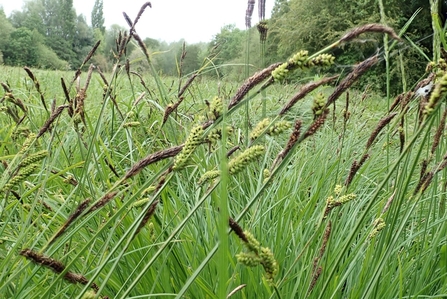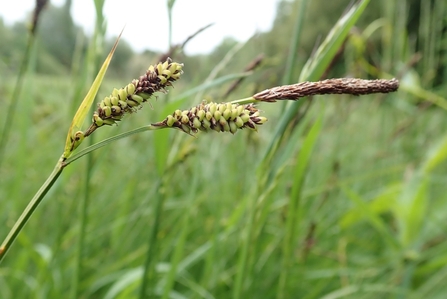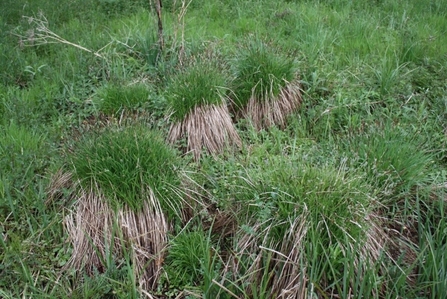Herts and Middlesex Wildlife Trust is aiming to save a critically endangered plant, Scarce Tufted-sedge Carex cespitosa, from extinction in the UK. Currently, the plant is only found on one site in the whole of the UK, in Hertfordshire, within a privately-owned county Local Wildlife Site. Both the owners and the Trust realise a duty to ensure the plants survival and a conservation plan to do so is being realised. This has been funded by Natural England’s Species Recovery Programme, which aims to halt and reverse declines on populations of our most threatened species.
Saving super rare species from extinction

Scarce Tufted-sedge © Astrid Biddle
Through a programme of surveying, habitat preparation, and then assisted colonisation, taking place through to March 2025, the Trust will deliver four distinct populations of Scarce Tufted-sedge across Hertfordshire and work has already begun. Cool spring weather conditions gave the plant a respite from detrimental drying conditions and a huge abundance of seeds were produced. These are now with a specialist nursery for wetland plants, where they have germinated.

Scarce Tufted-sedge detail © Astrid Biddle
Over time, the muddy hollows where plants such as Scarce Tufted-sedge would once have thrived amongst pools of water have dried out and are now much firmer underfoot. The change in habitat means that other plants move in and the space the plants would have had diminishes. Factors such as climate change, our increasing demands for water lowering water tables and rechannelling of the local river have all had an impact on the survival challenges for this plant in its current location. Whilst everything is being done to ensure its longevity there, the three other sites identified for suitability will insure against Scarce Tufted-sedge’s extinction. This example highlights that wetlands are now our most vulnerable habitats, having faced degradation across Hertfordshire for over a century, and now proving to be an early victim of climate change.
Ecologist at Herts and Middlesex Wildlife Trust, Astrid Biddle says:
“With our care of the special and rare plants supported in habitats like these, we seek to bring an appreciation of their value, not only as the green backdrop for our other endangered species, or as keystones upon which these species depend, but as the extraordinary and complex marvels in their own right. Using this to build on our experience, we will be able to assist, and where we can, continue to strengthen and connect habitats. Our aim is to leave the land in a better state than before. To that end, it is our ambition to introduce, reintroduce, and reinforce more species in the future.
“It’s part of our responsibility to future generations, so that they will be able to experience the full breadth of UK biodiversity. It’s also a continuing part of our strategy to restore 30% of land for nature by 2030.”

Scarce-Tufted Sedge growing in Tussocks
Also, funding from Natural England’s Species Recovery Programme will boost landscape-scale Water Vole recovery across the Hertfordshire and Middlesex region, with Waterlife Recovery Trust having their project to remove the most important driver of the Water Vole’s decline; predation by the invasive American Mink, supported.
As the State of Nature 2023 report revealed recently, one in six species is now at risk of being lost in Great Britain, but nature recovery projects like these can reverse this steep decline. For more information about Herts and Middlesex Wildlife Trust and the conservation work the charity is undertaking, visit hertswildlifetrust.org.uk
